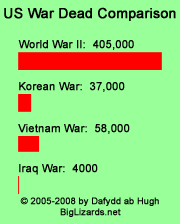Der Krapp
Golden Age of Japanese Cinema-Space Movies ~ Installment 13
In a style clearly influenced by the cinema of George Pal, Toho studios produced a series of highly colorful space operas in the late fifties and early sixties. As was the case with their monster pictures, primary competition in Japan was from Daiei (e.g., Warning from Space/Uchujin TokyoNi Arawaru, 1956).
Probably the best of all these films was Toho’s the Mysterians/Chikyu Boeigun (1957), which included among its other marvels a giant robot tearing up the country side and providing a definite Godzilla feeling to the proceedings. The climatic battle takes place in earth’s atmosphere after terrestrial forces develop new airships and a superweapon with which to combat the Mysterian base situated next to a lake in Japan. The results are unusual for science fiction cinema, giving the film the atmosphere (no pun intended ) of a Gernsbackian Air Wonder Stories. The alien plan to interbreed with earth women is more routine.
A sequel of sorts is Battle in Outer Space/Uchu Daisenso (1959), boasting a greater quantity of special effects, if not quality, than had been seen up to that time. Here the battle is joined on the moon and in space, although the final orgy of destruction is reserved for earth and poor, old battered Tokyo. The depressing aspect of this film is its overly optimistic projection of human progress in space by the mid-sixties! It is a lot of fun to watch.
Having done their versions of Pal’s War of the Worlds (1953) and Conquest of Space (1955), the Honda/Tsuburaya team seemed next to take inspiration from When Worlds Collide (1951), and the result was the spectacular Gorath/Yosei Gorasu (1962); only in this crisis of a rogue planet hurtling toward the earth, the old home planet is saved by using rockets to push it out of the way! Perhaps Velikovsky was the technical advisor.
More interesting was Atragon/Kaitei Guntan (1963), an entry in the Captain Nemo category with a super-submarine that can also travel in the air or space, drill through solid rock, move faster than a speeding bullet…well, you know. The enemy in this one is the lost continent of Mu (rarely used in film) and the bad guys are defeated by an admiral who refused to surrender at the end of WWII! There is something refreshing about this angle as most Japanese cinematic sci-fi always had the American market firmly in mind. (As late as Godzilla 1985 the Americans are portrayed in positive light and the Russians are the hotheads. But in Godzilla vs. King Ghidrah there is a scene of Godzilla wiping out American troops and inadvertently saving Japanese soldiers in WWII, a powerful moment.)
Note: A sea serpent makes an appearance in Atragon, tying the film back in with the giant monsters. Strangely, a scene involving a giant walrus was removed from the American release of Gorath, the only time a Toho behemoth would end up on the cutting room floor.
Most of Toho’s space movies after this crossed over with their regular giant monster series. Two notable examples are Monster Zero/Kaiju Daisenso (1965) and Destroy All Monsters/Kaiju Soshingeki (1968), the latter inspiring the Psychotronic reviewer to scream, “Aieee, too many monsters!”
After 1977, Japanese space movies were influenced by Star Wars, of course; but especially notable was Message From Space/Uchu Kara No Messeji (Toei, 1978), an expensive production with the late American star, Vic Morrow. To the extent that George Lucas was influenced by samurai films in addition to Buck Rogers and Flash Gordon, there is a perfect kind of cross-pollinization when direct samurai symbols and costumes are employed by director Fukasaku! Everyone’s influenced by Kurosawa’s the Seven Samurai (1954) anyway; and the final word on that was probably Roger Corman’s Battle Beyond the Stars in 1980.

